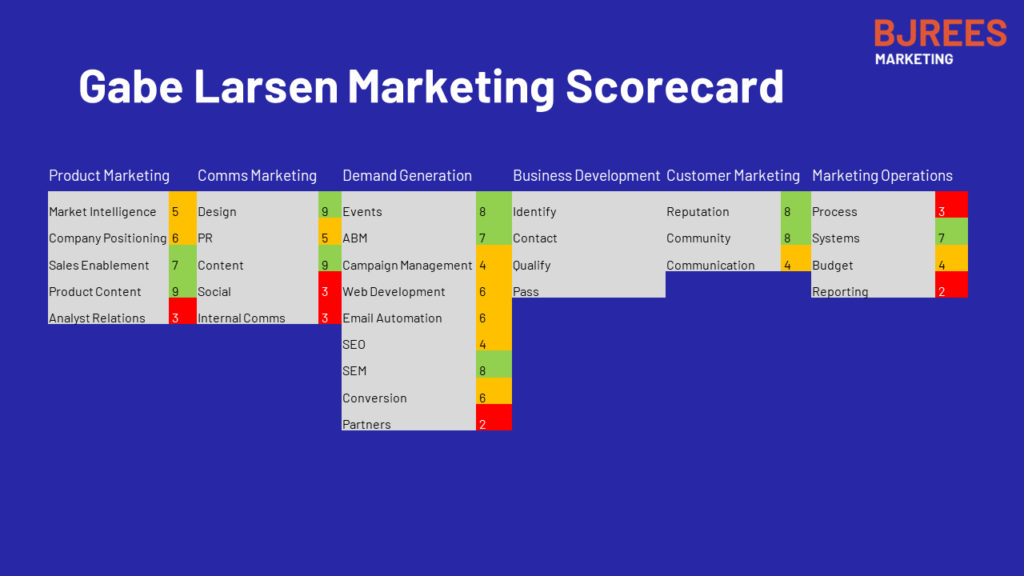There are always too many things to do running a marketing department. The essence of your job as a marketing leader is making strategic choices about where to double down and where to pause. This is what makes the job both interesting and difficult.
Below I’ve provided a scorecard that I’ve used many times in the past. It comes from the great Gabe Larsen, someone that I’ve followed for years on Linkedin, and I’d urge you to do the same.

This is just a example of his scorecard with some semi random numbers filled in. These are the scores that you give yourself and your department to show where there needs to be improvement and where everything is “just fine”.
An obvious first point – be honest. This is something for internal use only (as I say, the example above is semi-random). If you publish something like this to a wider group then there’s a risk you’re creating a problem for yourself (“I thought you said we were great on social media. It says here we’re hopeless!”). It takes a growth mindset to use this sort of thing really effectively. As always, fix the culture first.
So once you get over the cultural and communication issues, the very next question is “So what? What do I do with this?”. To quote a friend:
Eight out of 10 ideas are bad ideas. So the worst thing you can do is try to do everything. you’ll just burn everybody out. The “OK” thing you can do is to do nothing. At least you’re not burning everybody out. But of course the skill is choosing the right two things to take forward.
What I like about this scorecard approach, is that it gives you the superset of all the things you could do which forces you to consider them. In the example above, the marketing leader has proactively decided to not do any business development work at all. That’s not because she just doesn’t have time or doesn’t know anything about it. It’s a proactive decision that this isn’t something that will move the needle. Crucially, this frees up time to double down on something else. And that’s how you move from being a tactical marketer to a strategic marketer.

Leave a Reply